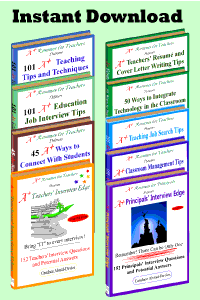Integrating technology effectively into a 21st-century classroom is critical to optimizing learning outcomes and preparing students for tomorrow. Below are five ways to do so.
1. Use a SMART Board.
The SMART Board seems to be one of the most modern forms of classroom technology. It allows the teacher to provide an interactive learning environment where students can observe, participate, and develop new skills.
The instructor can pull up various software programs such as Word, Excel, and PowerPoint, allowing students to introduce their projects via the SMART Board. Furthermore, they can ask students to answer questions using a laptop or wireless remote, thus reaching out to all students, including those who are shy or hesitant to respond publicly.
In addition to helping pupils learn, the SMART Board can help teachers connect their laptops to show presentations, link with another computer in a different classroom, monitor student activity on their particular network, and many others.
Incorporating tech tools that differentiate your lessons is an important goal all teachers should work to reach. Effective differentiation in the classroom is where students have fun, and learning is optimized.
2. Develop a class website
Classroom websites effectively inform students and parents of upcoming assignments, tests, and events. When designing a homepage for your class, keep it grade-level appropriate and abide by your district’s privacy act.
The website can be informative and be engaging and encourage students to play a more active role in their education. Ask your students what they want to see included on the class website. Incorporate as many appropriate ideas as possible and make it a class project to develop the page.
If any students excel in graphic or website design, ask them to help construct the website. You, of course, will be the person in charge of the site, with access and control of it. Upon completion, email students and parents advising them that it is up and running and the URL.
3. Use PowerPoint and projectors to present new information.
Since students learn differently, it is a good idea to incorporate a form of technology that simultaneously accommodates more than one learning style. PowerPoint presentations and projects are effective for reaching out to both auditory and visual learners. You can capture and hold students’ attention by including sound clips, eye-catching graphics, and videos. Not only is this true with teacher-designed lessons, but it also holds for student-conducted presentations.
Rather than only passing out copies of their assignments for their classmates to glance over, PowerPoint and projectors allow students to bring their ideas to life while providing them with an easy way to compile and edit their slideshows or videos. Students will have fun organizing their presentations, thus ensuring a more rewarding and memorable time. Utilize the SlideShare website to share students’ and your slideshows when they are finished.
4. Incorporate educational games
Educational games are an excellent teaching tool for engaging students, particularly the younger ones. Beneficial websites that cover Math, English, Science, Social Studies, Art, Music, and other academic areas can easily be located. One such comprehensive site is BrainPOP. It offers activities, movies, and quizzes. Kinetic City is website focuses on Science and provides various experiments, games, activities, and challenges.
Spelling City provides students with a fun way to learn their spelling. SMART Board Goodies is another comprehensive website that offers games for the SMART Board, such as Math Popper. For the Music classroom, many online instruments, including the keyboard, piano, and drums, can be found. By employing some or all of these sites, you will help your students learn and provide them with a fun and memorable experience.
5. Use iPads, iPods, podcasts, webinars, MP3s
The number of things people can do on hand-held devices such as iPods and iPads is astonishing. Students can download MP3s and videos to their iPods and iPads, continuing their learning differently. They located exciting and educational videos and talks on ted.com. This site encompasses a wide array of topics, promotes critical thinking amongst the class, and does not need to be accessed solely by a computer.
Other methods for engaging the students include using podcasts and webinars. Searching educational podcasts will help find current news information and educational clips that your class would enjoy listening to. Organizing a webinar by asking a speaker from another region or even country to host a presentation, setting up a teleconference, and allowing students to participate and ask questions openly will aid in student learning.


